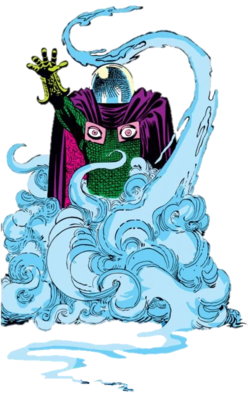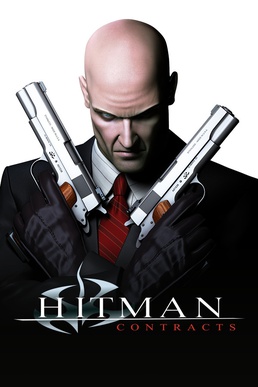Related Research Articles

Doom is a first-person shooter game developed and published by id Software. Released on December 10, 1993, for DOS, it is the first installment in the Doom franchise. The player assumes the role of a space marine, later unofficially referred to as Doomguy, fighting through hordes of undead humans and invading demons. The game begins on the moons of Mars and finishes in hell, with the player traversing each level to find its exit or defeat its final boss. It is an early example of 3D graphics in video games, and has enemies and objects as 2D images, a technique sometimes referred to as 2.5D graphics.

Hitman 2: Silent Assassin is a 2002 stealth video game developed by IO Interactive and published by Eidos Interactive for Microsoft Windows, PlayStation 2, Xbox and GameCube. The game was re-released for Windows through the Steam online distribution service, and a DRM-free version was later made available through GOG.com. It is the second installment in the Hitman video game series and the sequel to Hitman: Codename 47. The single-player story once again follows Agent 47, a genetically enhanced human clone who worked for the International Contract Agency (ICA) as an assassin. Following the events of Codename 47, the former contract killer has retired and started a peaceful life at a church, but after his only friend, Reverend Emilio Vittorio, is kidnapped by unknown assailants, 47 resumes work for the ICA in hopes of tracking him down.
A stealth game is a type of video game in which the player primarily uses stealth to avoid or overcome opponents. Games in the genre typically allow the player to remain undetected by hiding, sneaking, or using disguises. Some games allow the player to choose between a stealthy approach or directly attacking antagonists, but rewarding the player for greater use of stealth. The genre has employed espionage, counter-terrorism, and rogue themes, with protagonists that are special forces operatives, special agents, secret agents, thieves, ninjas, or assassins. Some games have also combined stealth elements with other genres, such as first-person shooters and also platformers.

Mysterio is a supervillain appearing in American comic books published by Marvel Comics. Created by Stan Lee and Steve Ditko, the character first appeared in The Amazing Spider-Man #13. He is primarily depicted as an adversary of the superheroes Spider-Man and Daredevil. While Mysterio does not possess any superhuman abilities, he is a former special effects artist, illusionist and actor who uses his talents to commit crimes. He is a founding member of the supervillain team the Sinister Six.
Hitman is a stealth video game franchise created by IO Interactive. In each installment, players assume the role of a cloned contract killer named Agent 47, who travels around the world to assassinate various targets that are assigned to him by the fictional International Contract Agency (ICA). Gameplay focuses on freedom of approach, with most levels placing the player in a large sandbox location where they have free rein to explore and find different ways to reach and eliminate their targets. Stealth is a major component of the gameplay and players are given various tools to accomplish their objectives, such as suppressed weaponry and the ability to take disguises, which allow 47 to blend in with non-player characters (NPCs) and bypass most restricted areas undetected.

Hitman: Contracts is a 2004 stealth video game developed by IO Interactive and published by Eidos Interactive for Microsoft Windows, PlayStation 2 and Xbox. It is the third installment in the Hitman video game series, and serves as both a remake of Hitman: Codename 47 and sequel to Hitman 2: Silent Assassin, incorporating gameplay elements introduced in the latter into missions from the first game, which have been remastered with enhanced graphics. The game also includes several new missions, which serve as flashbacks experienced by the player character, the cloned assassin Agent 47, after being almost killed on a botched job.

Agent 47 is a fictional character, the protagonist and the player character of the Hitman video game franchise, developed by IO Interactive. He has been featured in all games of the series, as well as various spin-off media, including two theatrically released films, a series of comics, and two novels. He has been voiced by actor David Bateson in every main entry in the series since its inception in 2000.

Hitman: Absolution is a 2012 stealth video game developed by IO Interactive and published by Square Enix's European branch. It is the fifth installment in the Hitman series and the sequel to 2006's Hitman: Blood Money. Before release, the developers stated that Absolution would be easier to play and more accessible, while still retaining hardcore aspects of the franchise. The game was released on 20 November 2012 for Windows, PlayStation 3, and Xbox 360. On 15 May 2014, Hitman: Absolution – Elite Edition was released for OS X by Feral Interactive; it contains all previously released downloadable content, including Hitman: Sniper Challenge, a "making of" documentary, and a 72-page artbook. On 11 January 2019, Warner Bros. Interactive Entertainment released enhanced versions of Absolution and Blood Money for the PlayStation 4 and Xbox One as part of the Hitman HD Enhanced Collection.

The Last of Us is a 2013 action-adventure game developed by Naughty Dog and published by Sony Computer Entertainment. Players control Joel, a smuggler tasked with escorting a teenage girl, Ellie, across a post-apocalyptic United States. The Last of Us is played from a third-person perspective. Players use firearms and improvised weapons and can use stealth to defend against hostile humans and cannibalistic creatures infected by a mutated fungus. In the online multiplayer mode, up to eight players engage in cooperative and competitive gameplay.

Hitman Go is a turn-based puzzle video game developed by Square Enix Montréal and published by Square Enix's European subsidiary. Announced in February 2014, the game was released for iOS in April 2014 and for Android in June 2014. Windows and Windows Phone versions were released the following year in April 2015. In February 2016, a "Definitive Edition" version was released on PlayStation 4, PlayStation Vita, and on Linux and Windows via Steam. It is the first game developed by Square Enix Montréal, a studio founded in 2011. Development entered full production in 2013 and was completed by eleven people using the Unity game engine.

Ellie is a character in the video game series The Last of Us by Naughty Dog. She is portrayed by Ashley Johnson through motion capture and voice acting; in the television adaptation, she is portrayed by Bella Ramsey. In the first game, The Last of Us (2013), Joel Miller is tasked with escorting a 14-year-old Ellie across a post-apocalyptic United States in an attempt to create a cure for an infection to which Ellie is immune. While players briefly assume control of Ellie, the artificial intelligence primarily controls her actions. Ellie reappeared as the playable character in the downloadable content prequel The Last of Us: Left Behind, in which she spends time with her friend Riley. In The Last of Us Part II (2020), players control a 19-year-old Ellie as she seeks revenge on Abby.

Hitman is a 2016 stealth video game developed by IO Interactive and published by Square Enix. The game, which has six episodes, is the sixth mainline entry in the Hitman franchise, the first installment of the World of Assassination trilogy, and the successor to Hitman: Absolution (2012). The single-player story follows genetically engineered assassin Agent 47 as he goes on a worldwide adventure and solves a mysterious series of seemingly unconnected assassinations. Hitman features a number of large, open-ended sandboxes that Agent 47 can freely explore. The game presents the player with various assassination opportunities, many of which are unconventional. IO Interactive introduced a "live component" to the game with new content being regularly delivered in downloadable form.

Technobabylon is a cyberpunk adventure game developed by Technocrat Games and published by Wadjet Eye Games for Microsoft Windows, iOS, Linux, and macOS. Originally intended as a series of 10 free episodic games, of which three were released, it was released as a full game on 21 May 2015. The game's story covers 10 chapters and focuses on three characters who live in the future city of Newton which is governed by an autonomous AI administrator, each of whom is faced with a complex matter, but soon find themselves caught up in a conspiracy surrounding the city's AI, including murder and hidden truths about its creation.

Hitman: Sniper is a 2015 mobile shooting gallery video game in the Hitman series by Square Enix Montréal. As the series' mainstay protagonist Agent 47, the player looks through a first-person sniper scope vision on their touchscreen device to assassinate several powerful figures who have assembled at a lakeside compound without alerting their associates. The player uses the environment to find creative ways to kill these targets, sometimes prompted by secondary objectives. Through mission progression, the player unlocks more powerful weapons and new weapon abilities.

Celeste is a 2018 platform game developed and published by indie studio Maddy Makes Games. The player controls Madeline, a young woman with anxiety and depression who aims to climb Celeste Mountain. During her climb, she encounters several characters, including a personification of her self-doubt known as Badeline, who attempts to stop her from climbing the mountain.

Life Is Strange: Before the Storm is an episodic graphic adventure video game developed by Deck Nine and published by Square Enix. Its three episodes were released for PlayStation 4, Windows, and Xbox One in late 2017. It is the second entry in the Life Is Strange series, set as a prequel to the original game, focusing on 16-year-old Chloe Price and her relationship with schoolmate Rachel Amber. Gameplay concerns itself mostly with the use of branching dialogues and interacting with the environment. In September 2018, it was ported to Linux and macOS and later that month to Android and iOS. A remastered version of the game was released as part of the Life Is Strange Remastered Collection in February 2022.

Hitman 2 is a 2018 stealth video game developed by IO Interactive. It is the seventh main installment in the Hitman video game series, the sequel to 2016's Hitman and the second game in the World of Assassination trilogy. The game continues the story arc started in Hitman, following genetically engineered assassin Agent 47 as he searches for the mysterious "Shadow Client" who is trying to destroy Providence, a secretive organization that controls global affairs. It also explores more of 47's mysterious background, which Providence offered to bring to light in exchange for 47's assistance. Like its predecessor, the game is structured around six large sandbox locations that players can freely explore to find opportunities to eliminate their targets. It also included two online multiplayer modes called Sniper Assassin and Ghost Mode, though the game's servers for both modes have since been shut down; Sniper Assassin can still be played single-player.

Hitman 3 is a 2021 stealth game developed and published by IO Interactive. It is the eighth main installment in the Hitman video game series, the sequel to 2018's Hitman 2, and the third and final entry in the World of Assassination trilogy. Concluding the story arc started in 2016's Hitman, the game follows genetically engineered assassin Agent 47 and his allies as they hunt down the leaders of the secretive organization Providence, which controls global affairs and was partially responsible for 47's creation and upbringing. Like its two predecessors, the game is structured around six levels, five of which are large sandbox locations that players can freely explore to find opportunities to eliminate their targets. Each mission also presents challenges that players can complete to unlock new items.

"Milkman Conspiracy" is a level in the 2005 video game Psychonauts. It is a world that takes place in the mind of Boyd Cooper, a paranoid security guard of an asylum, which the protagonist Raz explores. The area has unusual gravity, causing Raz to be pulled towards different roads when he is near and walking at unusual angles. Multiple games have been compared to this level, including Jazzpunk, We Happy Few, and Super Mario Galaxy.

Sapienza is a fictional Italian town from IO Interactive's Hitman video game franchise. First appearing in Episode 2: Sapienza of the 2016 video game Hitman, Sapienza was modeled after the Ligurian comune Vernazza as well as various towns along the Amalfi Coast in Southern Italy, and is similarly presented as a popular tourist destination like its real life counterparts. The levels of Hitman were originally released in episodic format, with Episode 2: Sapienza following Episode 1: Paris. In Episode 2, the player character Agent 47 travels to Sapienza in order to terminate a deadly biological weapon and its creator. Players may take advantage of "Opportunities", story driven threads scattered around the level that 47 can use to manipulate and kill targets. The sparsely populated town's peaceful environment and relaxed "siesta" ambience is intended to offer freedom of exploration, a deliberate choice to let players discover at their own pace weapons, secret routes and story threads that they could leverage in order to achieve the main objectives. Sapienza reappears in further levels which were subsequently introduced by Hitman developers, such as the bonus episode "The Icon", where the town center is reimagined as a movie set run by an assassination target.
References
- 1 2 3 4 5 6 7 Wiltshire, Alex (March 24, 2017). "How Hitman's Hokkaido level was made". Rock Paper Shotgun . Retrieved April 28, 2023.
- 1 2 3 4 "Hitman Season 1 Interview Series - Chapter 6: Hokkaido". Game Reactor. February 16, 2017. Retrieved April 28, 2023.
- 1 2 Wong, Kevin (December 2, 2016). "How 'Hitman' Uses Thoughtful Level Design to Tell Stories". Vice . Retrieved April 28, 2023.
- ↑ Williams, Mike (March 18, 2017). "Hitman Season One: Looking Back With Creative Director Christian Elverdam". USgamer . Archived from the original on March 20, 2017. Retrieved April 28, 2023.
- 1 2 Nunneley-Jackson, Stephany (October 12, 2016). "Hitman: Episode 6 - Hokkaido is the Season Finale and out later this month". VG247. Retrieved April 28, 2023.
- ↑ Reetun, John (January 21, 2019). "Hitman 2 Bonus Episode takes players back to Hokkaido". Game Revolution. Retrieved April 28, 2023.
- 1 2 "Hitman - Episode 6: Hokkaido". Metacritic . Retrieved April 28, 2023.
- 1 2 "Hitman - Episode 6: Hokkaido" . Retrieved April 28, 2023.
- 1 2 Carter, Chris (October 31, 2016). "Review: Hitman: Hokkaido". Destructoid . Retrieved April 28, 2023.
- 1 2 Beck, Adam (November 3, 2016). "Review: Hitman – Episode 6: Hokkaido". Hardcore Gamer. Retrieved May 1, 2023.
- 1 2 Reilly, Luke (November 2, 2016). "Hitman Episode 6: Hokkaido Review". IGN . Retrieved April 28, 2023.
- 1 2 Savage, Phil (November 9, 2016). "Hitman Episode 6 review". PC Gamer . Retrieved April 28, 2023.
- 1 2 Brown, Fraser; Savage, Phil (February 2, 2021). "Every modern Hitman level, ranked from worst to best". PC Gamer . Retrieved April 28, 2023.
- ↑ Brooke, Sam (November 2, 2016). "Hitman: Episode 6 - Hokkaido Review". Push Square. Retrieved April 28, 2023.
- ↑ MacLeod, Ryan (November 3, 2016). "Hitman Hokkaido Is Sleek And Subtle". Kotaku . Retrieved May 1, 2023.
- ↑ Black, Hamish (December 9, 2016). "Ranking the Episodes of 2016's Hitman". Paste Magazine . Retrieved April 28, 2023.
- ↑ Beck, Adam (November 12, 2018). "Every Hitman Mission, Ranked from Worst to Best". Hardcore Gamer. Retrieved April 28, 2023.
- ↑ Roberts, Samuel; Peckman, James (January 23, 2021). "The 10 best Hitman levels – including Hitman 3 locations". TechRadar. Retrieved April 28, 2023.